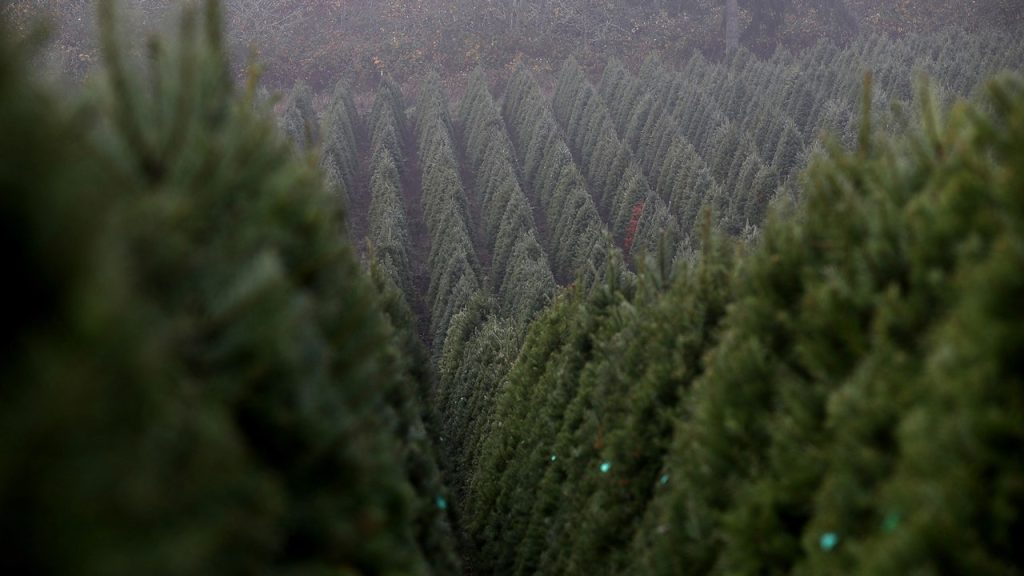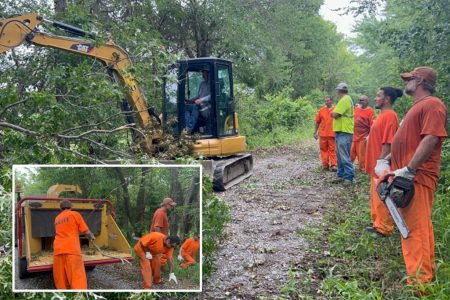Oregon’s reign as the Christmas tree capital of the United States is undisputed. Producing approximately 4 million Christmas trees annually, Oregon single-handedly contributes about 33% of the nation’s total Christmas tree production, generating an estimated $120 million in revenue each year. This impressive output solidifies Oregon’s position at the forefront of the American Christmas tree industry, significantly impacting the festive landscape across the country. Nestled within Oregon’s verdant landscape is Holiday Tree Farms, a behemoth in the world of Christmas tree production, often recognized as the largest of its kind globally. This massive operation, amidst the approximately 15,000 Christmas tree farms scattered across the United States, underscores the scale of the industry and Oregon’s dominant role within it.
Holiday Tree Farms, a family-owned business established by the Schudel family in 1955, has grown into an expansive operation covering 8,500 acres. Each year, this sprawling farm harvests approximately 1 million Christmas trees, highlighting the farm’s impressive production capacity and its contribution to Oregon’s leading position in the industry. During the peak harvest season, the farm buzzes with activity across its 12 processing yards, employing around 600 workers to manage the intricate logistics of harvesting, processing, and shipping the millions of Christmas trees destined for homes across the country and around the world. This seasonal surge in employment underscores the economic impact of Holiday Tree Farms on the local community and highlights the significance of the Christmas tree industry as a source of seasonal employment.
The Douglas fir, a quintessential Christmas tree variety, reigns supreme at Holiday Tree Farms, representing the most popular choice among consumers. These majestic evergreens, carefully cultivated on the farm, embark on a journey beyond Oregon’s borders, reaching homes across the United States and even venturing internationally to countries like Mexico, Guam, and various nations in Asia and Central America. This widespread distribution underscores the farm’s extensive reach and the global demand for its high-quality Christmas trees. Beyond the ubiquitous Douglas fir, Holiday Tree Farms also cultivates other popular varieties, including the Grand fir, Noble fir, and Nordmann fir, offering consumers a diverse selection to suit their individual preferences and contribute to the festive ambiance of their homes during the holiday season.
Trailing just behind Oregon in Christmas tree production is North Carolina, another significant player in the industry. With an annual production of around 4 million trees, North Carolina contributes substantially to the national supply, generating approximately $86 million in revenue. The combined output of Oregon and North Carolina represents a substantial portion of the nation’s Christmas tree market, highlighting the importance of these two states in meeting the demand for real Christmas trees during the holiday season. Across the United States, the annual sale of real Christmas trees reaches an estimated 25 to 30 million, demonstrating the enduring popularity of this traditional holiday centerpiece. This robust market supports a vast network of Christmas tree farms, with an estimated 350 million trees currently growing across the country, ensuring a continued supply for years to come.
The journey from a tiny seedling to a fully grown Christmas tree is a lengthy and demanding process, requiring significant time and dedication from growers. On average, a Christmas tree destined for a family’s living room takes approximately seven years to reach the desired height of six to seven feet. However, depending on the specific species and growing conditions, some trees may require up to 15 years to reach maturity. This extended growth cycle emphasizes the long-term investment required in Christmas tree farming and the patience necessary to cultivate these festive evergreens. Each spring, following the holiday season harvest, Christmas tree farmers embark on the task of replenishing their fields, planting one to three seedlings for every tree harvested the previous fall. This continuous cycle of planting and harvesting ensures a sustainable supply of Christmas trees for future generations, maintaining the tradition of bringing a real tree into homes during the holiday season.
The meticulous process of cultivating Christmas trees involves ongoing care and maintenance throughout their growth cycle. From planting the seedlings to shaping the trees and protecting them from pests and diseases, farmers invest considerable effort in nurturing these festive evergreens. The slow and deliberate growth of these trees, often taking several years to reach their desired size, reflects the dedication and commitment of Christmas tree farmers across the country. Their efforts ensure that families can continue to enjoy the tradition of decorating a real Christmas tree, bringing the festive spirit and the scent of pine into their homes during the holiday season. This enduring tradition underscores the cultural significance of the Christmas tree and the continued importance of the Christmas tree industry in providing this essential element of holiday cheer.










